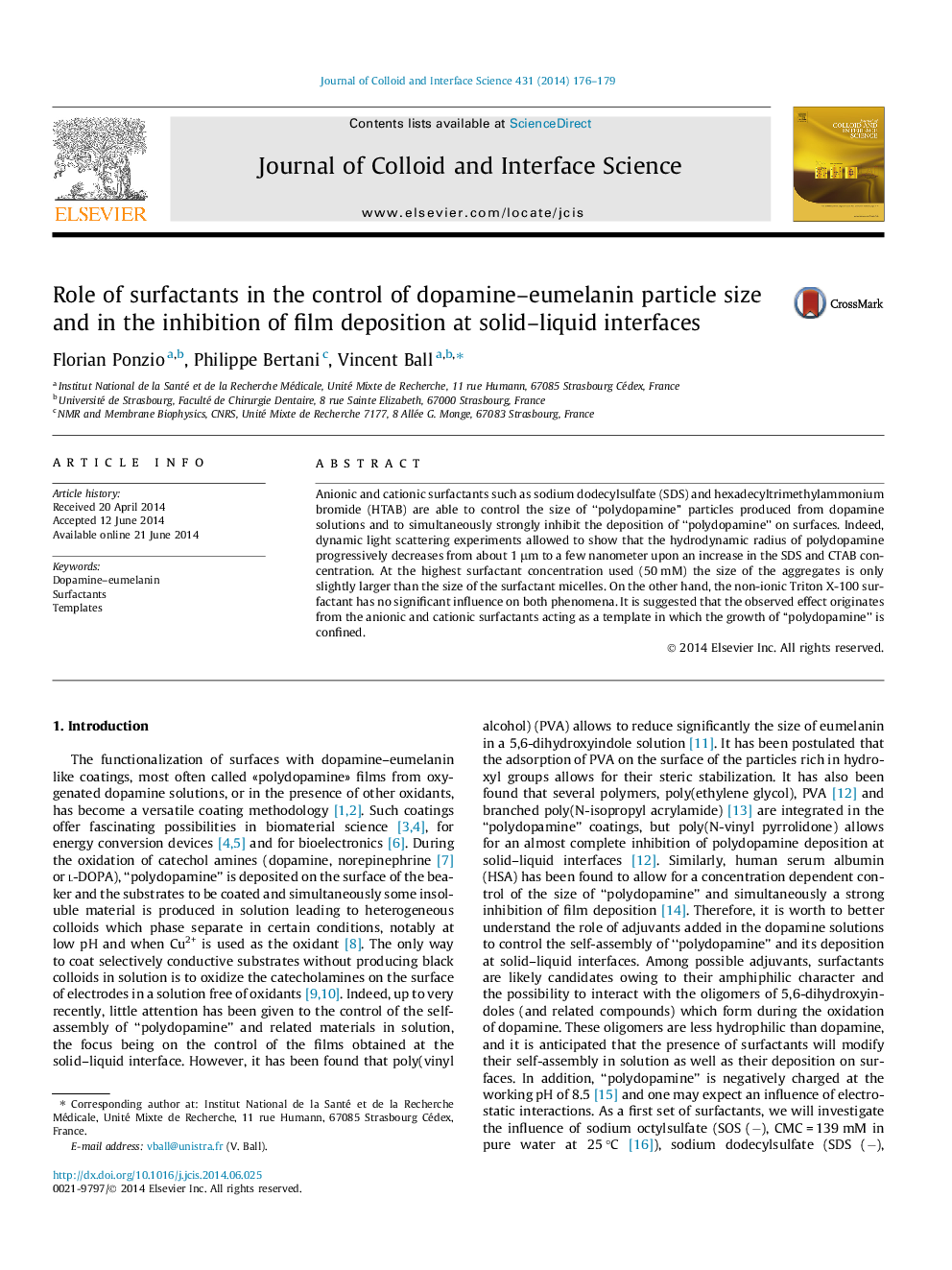| Article ID | Journal | Published Year | Pages | File Type |
|---|---|---|---|---|
| 607086 | Journal of Colloid and Interface Science | 2014 | 4 Pages |
•The self-assembly/polymerization of polydopamine is modified by surfactants.•SDS and HTAB allow for a strong inhibition of polydopamine deposition.•Such surfactants may play the role of templates for the formation of polydopamine.
Anionic and cationic surfactants such as sodium dodecylsulfate (SDS) and hexadecyltrimethylammonium bromide (HTAB) are able to control the size of “polydopamine” particles produced from dopamine solutions and to simultaneously strongly inhibit the deposition of “polydopamine” on surfaces. Indeed, dynamic light scattering experiments allowed to show that the hydrodynamic radius of polydopamine progressively decreases from about 1 μm to a few nanometer upon an increase in the SDS and CTAB concentration. At the highest surfactant concentration used (50 mM) the size of the aggregates is only slightly larger than the size of the surfactant micelles. On the other hand, the non-ionic Triton X-100 surfactant has no significant influence on both phenomena. It is suggested that the observed effect originates from the anionic and cationic surfactants acting as a template in which the growth of “polydopamine” is confined.
Graphical abstractFigure optionsDownload full-size imageDownload high-quality image (53 K)Download as PowerPoint slide
